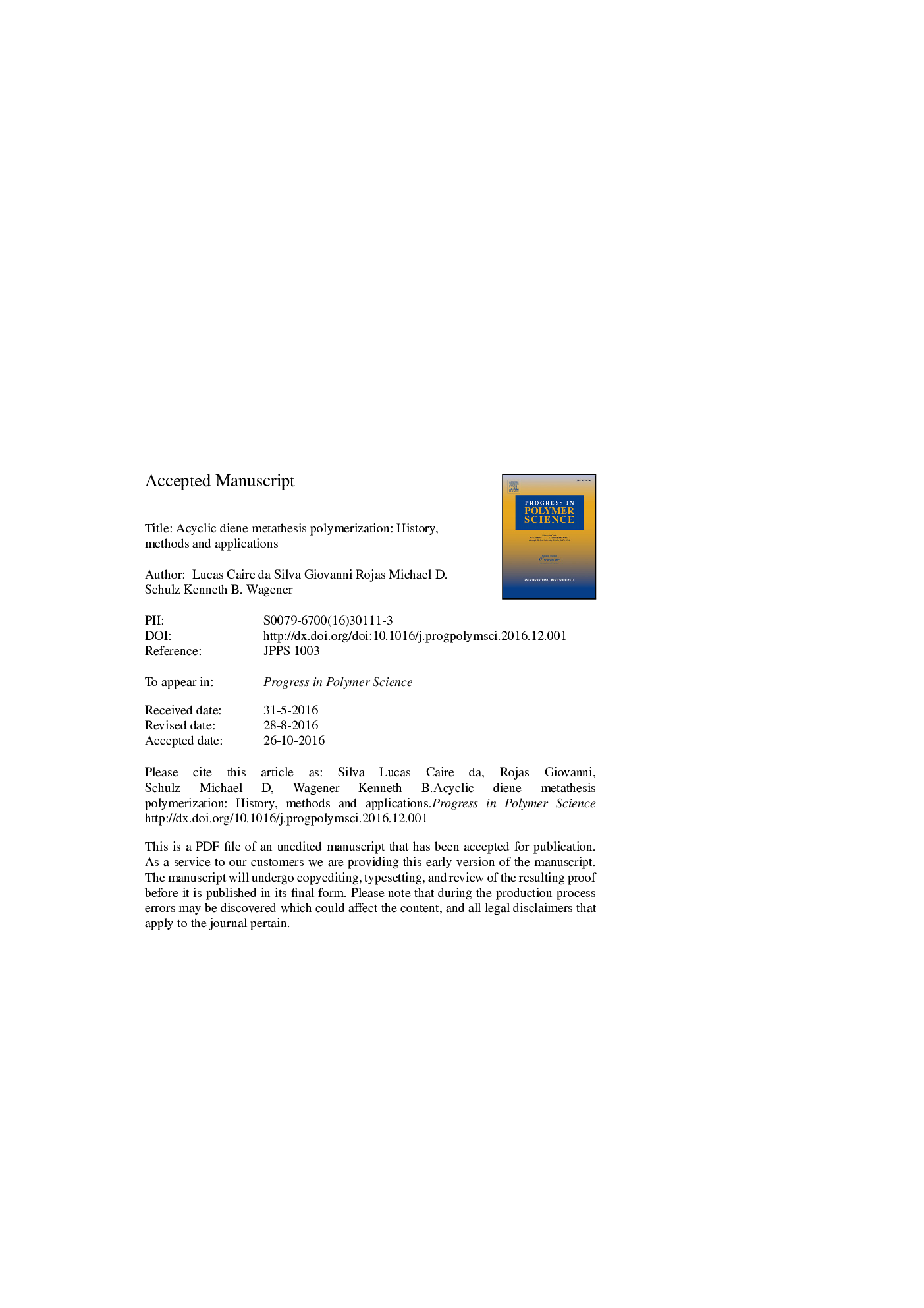| Article ID | Journal | Published Year | Pages | File Type |
|---|---|---|---|---|
| 5207902 | Progress in Polymer Science | 2017 | 131 Pages |
Abstract
Acyclic Diene Metathesis (ADMET) polymerization was established decades ago and has since developed into a robust and reliable technique. A wide range of different, new materials exhibiting unique properties has been produced via ADMET polymerization since its development. This versatile technique allows, through the right combination of monomer design and choice of catalyst, the synthesis of various functional polymers in addition to a precise control over primary structure. Systematic studies on precise ADMET polymers have greatly contributed to a better understanding of how branch identity and its distribution along the polymer backbone affect the thermal/electronic properties, crystallization, molecular dynamics and morphology of different materials. This article presents an extensive review of how ADMET started, the mechanism that underlies the structural features of ADMET polymers and the different strategies and techniques that have been developed over the years to overcome common synthetic challenges. Monomer synthesis methods are also discussed in detail, providing an important overview of the limitations and advantages of using ADMET as a polymerization technique. Many examples are given of functional ADMET polymers that have been developed by research groups all over the world.
Keywords
EtOHTMSBrEthylaluminum dichloridePLEDPrecision polymersROMPPPVADMETPPPDSCEVAPPCATRPTHFDMFPTVRCMnuclear magnetic resonanceEthanolAtom transfer radical polymerizationHomohighest occupied molecular orbitalTetrahydrofuranLDANMRRing-closing metathesisDASTDiethylaminosulfur trifluoridedimethylformamidelight-emitting diodeLithium diisopropylamideOlefin metathesisPoly(p-phenylene vinylene)Polyethylenepolyethylene glycolFunctional polymersRing-opening metathesis polymerizationStep-growth polymerizationPEGDifferential scanning calorimetry
Related Topics
Physical Sciences and Engineering
Chemistry
Organic Chemistry
Authors
Lucas Caire da Silva, Giovanni Rojas, Michael D. Schulz, Kenneth B. Wagener,
